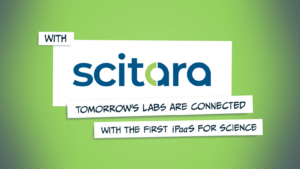It seems like the term “Composable Architecture” is having its moment in the sun. I’ve seen references to it popping up all over the place after reading a recent Gartner report (Becoming Composable: A Gartner Trend Insight Report) that describes the concept in detail. When I first heard the term, I couldn’t help but think about “compostable,” which was a bit of a head-scratcher at first. However, after reading the report and other related content, I now understand that Composable Architecture is a trend that is taking the enterprise IT industry by storm. For those of us in laboratory IT, it illustrates the benefits that can be realized when we achieve true digital modernization.
At its core, Composable Architecture is built by establishing a foundation of best-of-breed, modern cloud-based technologies for each granular business function or task. These technologies must provide a business interface that uses a common standard, such as REST, and a standard means of authentication, such as OAuth. With these foundational components in place, an integration Platform as-a-Service (iPaaS) like Mulesoft, Boomi, or Zapier can be used to “compose” applications. Utilizing these business interfaces and federated authentication/identity providers, an iPaaS serves as an automation layer to coordinate events, actions, and data exchange between these function-specific technologies.
There are several benefits to using a Composable Architecture in IT systems. For one, it eliminates reliance on a single monolithic vendor for the core application. With a Composable Architecture and nominal training on the iPaaS, non-specialized workers can create and maintain these business automations. The term “citizen developer” is being used for those people with domain knowledge and basic IT skills, who, in a Composable Architecture, can build their own applications.
In laboratory IT, the need for digital modernization is critical, but there have been some significant challenges to realizing a Composable Architecture. Laboratories often operate in highly regulated environments, and modern iPaaS solutions that are suitable for other verticals may not be suitable for the laboratory due to a lack of regulatory controls. Furthermore, on-prem laboratory technologies often exist in highly protected network environments. Convincing your IT security team to create firewall exceptions for each of these assets to make them cloud-accessible can be a challenge.
However, Scitara DLX can play a role in overcoming these challenges. Scitara DLX is an iPaaS designed specifically for the laboratory industry. Like many of the popular industry-agnostic iPaaS solutions, it offers easy integration with modern cloud technologies through a variety of easily configurable connectors. What makes Scitara DLX unique is its focus on connectivity for on-prem lab assets. Scitara DLX™ provides real-time cloud connectivity for all on-prem lab assets, such as chromatography systems, bioreactors, balances, pH meters, spectrophotometers, and more. The Scitara DLX connectivity architecture adapts to a wide variety of connectivity modes, such as RS-232, OPC, and file exchange to connect both modern and legacy equipment. For assets in protected network environments, DLX provides simple and secure isolation of all on-prem traffic to DLX cloud services. Finally, Scitara DLX was designed to be deployed in a compliant environment. It provides audit evidence and regulatory controls for your workflows and can even put a “compliance wrapper” around those legacy technologies that cause perennial audit pain.
If you work in a laboratory environment and are reading this article, you may be wondering where you can sign up for Composable Architecture. Unfortunately, the challenges to modernizing lab IT have served as impediments to realizing a Composable Architecture. However, with the right technology solutions, such as Scitara DLX, we can begin to overcome these challenges and realize the full potential of a Composable Architecture. So, while extending your Composable Architecture into the laboratory may seem daunting, don’t lose hope! In the next two articles we will do a deeper dive into Scitara DLX’s architecture and then walk through a specific use-case where Scitara DLX was installed in a bioprocess lab and applications were “composed” to assist in upstream development.
